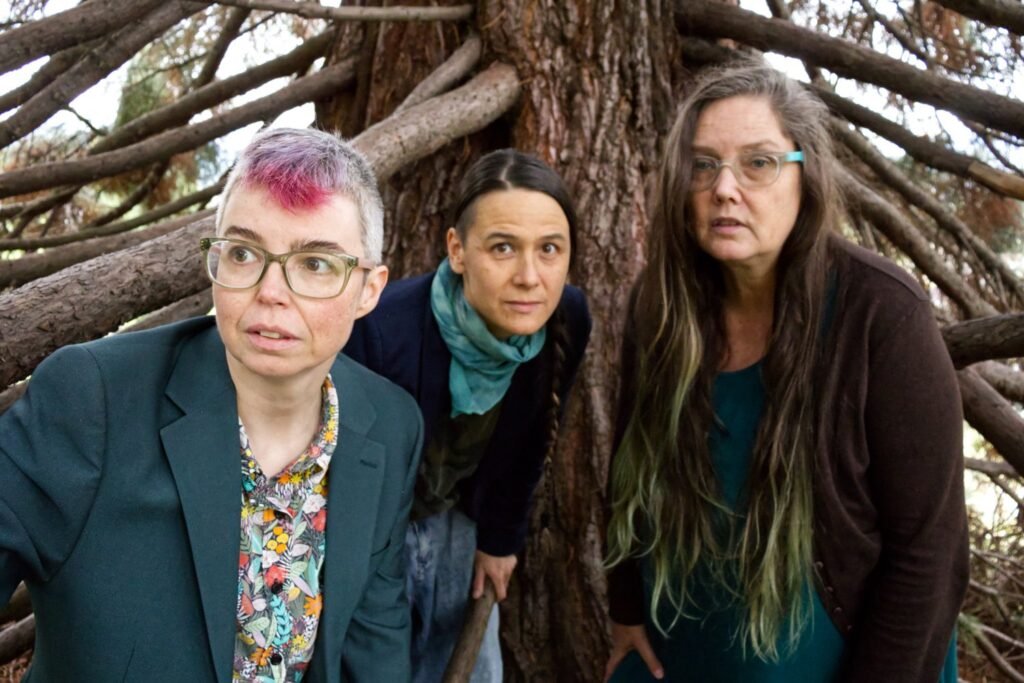“It’s not a Disney movie; it’s not a short hike,” she stresses. “Actually our natural state is to be more aware of how everything is interconnected, and the relationship of sound and sight in the forest is really interesting to me. So, for example, I’ve been spending a lot of time in the forest lately, and it is safe to know who’s around, which creatures are around. Your ears become extra-attuned to sound—and not just for safety, but also for interest. You want to know who’s around, and maybe you get to catch a glimpse of a creature if you’re listening. So there’s this relationship between sound and sight in the forest that is really amazing: the 3D experience of being surrounded by birds in the late spring is incredible, and then the silence of the winter is also incredible. The first time you hear the frogs in spring! So I’m trying to communicate how this is our profound state.”
Joining Miller at 8EAST on Friday and Saturday will be longtime NOW collaborator Anne La Berge, a flutist and electronic composer from Amsterdam; first-time visitor Olivia Shortt, a Toronto-based baritone saxophonist and member of the Nipissing First Nation; and two younger musicians, oboist Haley Bird, and bass clarinetist Aidan Edwards. (Miller notes that Shortt will also take part in NOW’s next project: the LUCENT festival of Indigenous improvisers, at 8EAST from October 25 to 27.) Handling the visual dimension will be Mind of a Snail’s Chloé Ziner and Jessica Gabriel, whose quietly spectacular mix of puppetry, cinematography, and live projection has already graced two earlier NOW Society undertakings. As the name of their collaboration suggests, the two have long been aware of the wonders of nature, and for FOREST they’ll give us a chance to look through the eyes of a snail for at least some of the journey.
It’s “an intimate concert on the forest floor,” says Gabriel, laughing. “I think it’s going to be really cool,” adds Ziner, noting that this is not some passive, sit-down presentation. Viewers will be toured through FOREST in groups of five, departing at five-minute intervals. “There’s going to be a closer-up perspective, where the screen that you’re looking at is just a few feet in front of you. And then by the end you’ll come to a perspective where you can see the whole space… The space, and the musicians, and what we’re doing. So it’s going to be a unique listening-and-visual experience that I think will be worthy coming to see.”
“What’s cool about working with NOW and Lisa Cay Miller is that she really sets interesting frames that challenge us to play inside,” she continues. “And she brings together groups of improvisers who are very skilled. It’s really nice to be working with people who really know how to improvise and listen and respond in surprising ways. They’re responding to the visuals as if the visuals are another sound in the room—or at least that’s the hope.”
“We become an instrument in the mix,” Gabriel notes. “We influence each other.”
In a very real sense, the forest itself is also a collaborator, contributing textures to FOREST’s visual landscape. “The overhead projectors are magnifiers, right?” Gabriel says. “So I have a dream of dissecting an owl pellet right on an overhead projector. All the beautiful detritus of the forest floor can be shown on the overhead projectors.”
“I think that what I’m going to take out of this project is the feeling of being surrounded and immersed in something alive,” Ziner adds. “That can happen in an urban environment also, but the forest environment brings it into focus.”
And, appropriately, the FOREST project itself will discover its final shape in nature, surrounded by trees.
“Our first rehearsal will be spending the entire day in the forest,” explains Miller. “We might be collecting sounds; we might be collecting things that have fallen onto the ground; we might be talking about what we’re going to do. We might be just hanging out silently, going for a walk. So we are going to come up with the work together, and I don’t think it’s going to be a literal representation; I imagine there’s going to be more of a sense of events; a sense of sights and sounds rather than the actual sights and sounds themselves or any kind of narrative.




